Welcome to Taliouine, the golden town of Morocco’s saffron capital. This small town in the High Atlas Mountains is known for producing some of the finest saffron in the world. Taliouine has been the heart of Morocco’s saffron industry for centuries, and the town’s economy revolves around the precious spice. From exploring the saffron fields and farms to tasting the saffron-infused local cuisine, there are plenty of reasons to visit this hidden gem of Morocco.
The History of Saffron Production in Taliouine
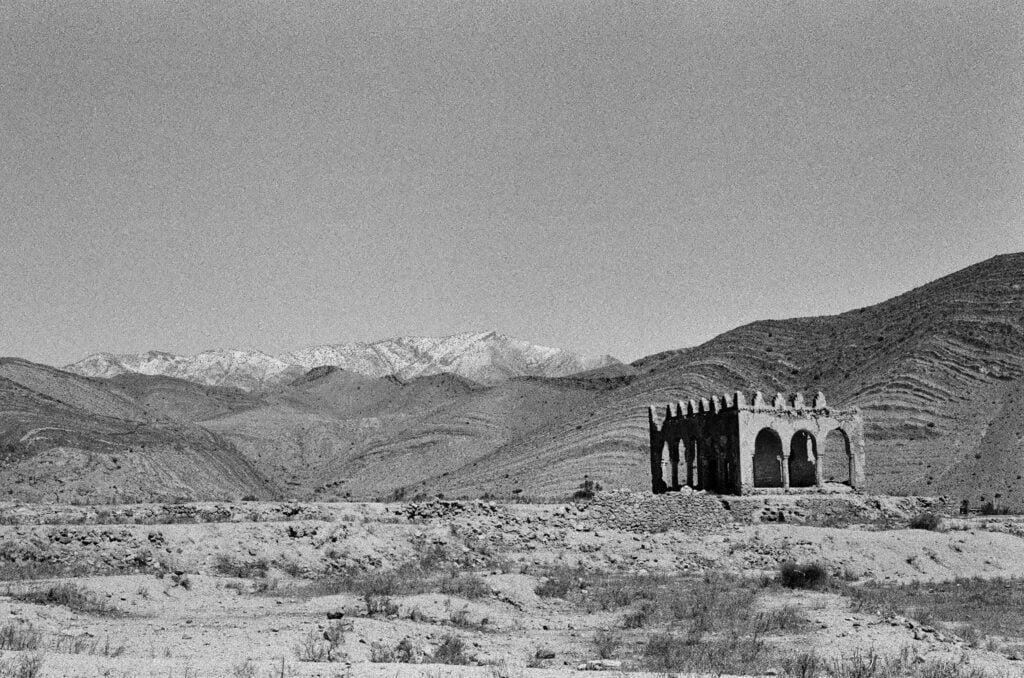
Taliouine is a small town in the heart of the Atlas Mountains and is recognized for producing some of the world’s best saffron. The village has a long and rich history of saffron production dating back to ancient times. The saffron fields of Taliouine produce the prized spice that has flavored Moroccan cuisine for centuries.
The production of saffron in Taliouine has been a vital part of the town’s economy for generations. Cultivating saffron requires a great deal of care and attention, which is why the people of Taliouine take great pride in their saffron. They have developed traditional methods of cultivating and harvesting saffron, passed down through the generations.
One of the reasons why saffron production in Taliouine is so successful is due to the region’s unique climate and soil. The hot, dry summers and cool, wet winters provide the perfect conditions for saffron to grow. Additionally, the ground in the region is rich in minerals, supplying the saffron with the nutrients it needs to thrive.
Today, Taliouine remains a hub for saffron production, with many families continuing to cultivate the spice using traditional methods. Visitors to the town can see the saffron fields in bloom during the harvest season, which takes place in October and November. It is incredible to see the vibrant purple flowers that produce the precious red stigmas used to make saffron.
Exploring the Saffron Fields and Farms in Taliouine
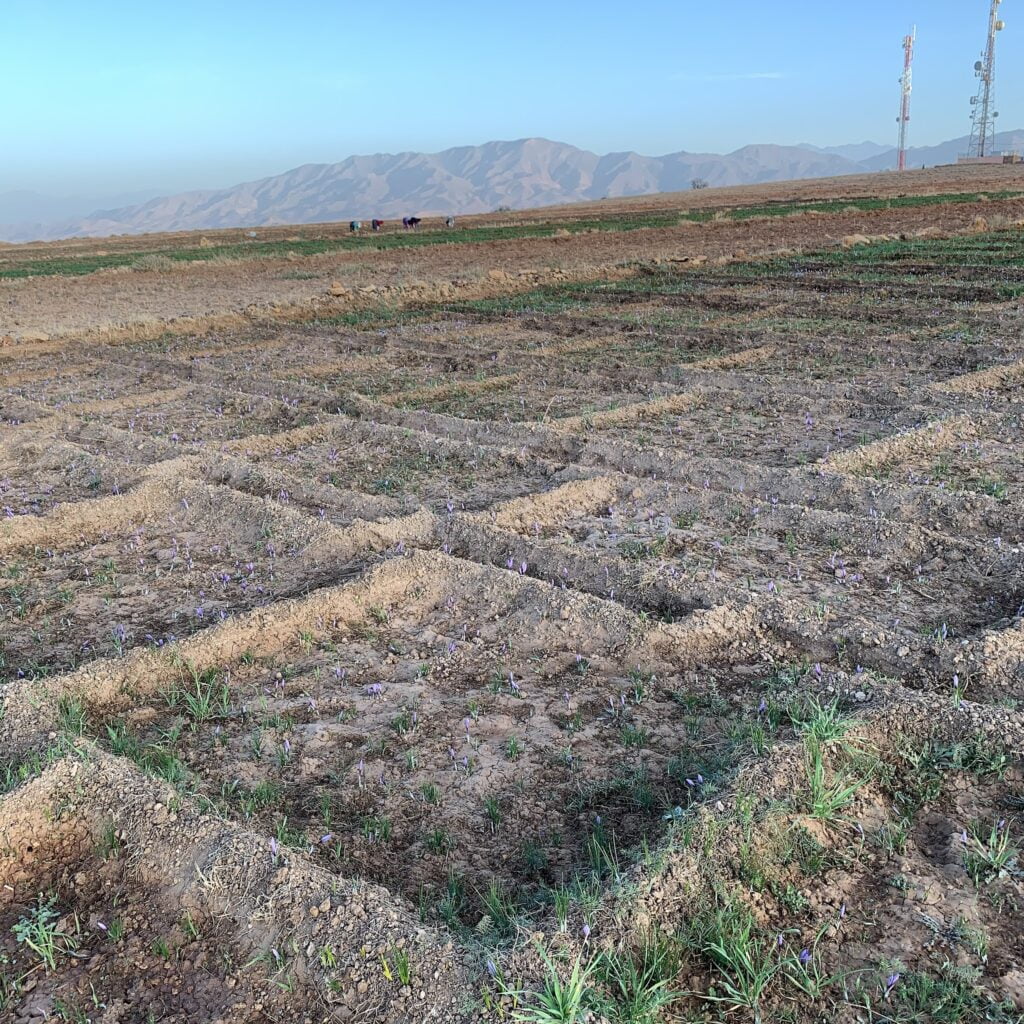
As you wander through Taliouine’s countryside, you’ll come across vast fields of vibrant purple flowers – the delicate Crocus sativus. Farmers meticulously harvest these flowers to obtain their highly sought-after saffron threads. If you’re interested in witnessing this tender process, cooperative farms in Taliouine offer guided tours of their saffron production. You’ll see the whole process, from bulb planting to the final packaging of the precious spice.
During the harvest season from late October to early November, farmers in Morocco work tirelessly to collect the delicate stigmas from each saffron flower. This process requires a lot of skill and effort, and visitors can even participate in it. You’ll experience the hard work and dedication that goes into producing this highly coveted spice firsthand. And as you learn about saffron, you can also share the warm hospitality of the local Berber community. People throughout the region know their kindness and generosity.
When you visit Taliouine, you can witness the stunning beauty of saffron fields and experience the unique culture and traditions that define this part of Morocco.
The Benefits and Uses of Saffron: A Culinary Delight
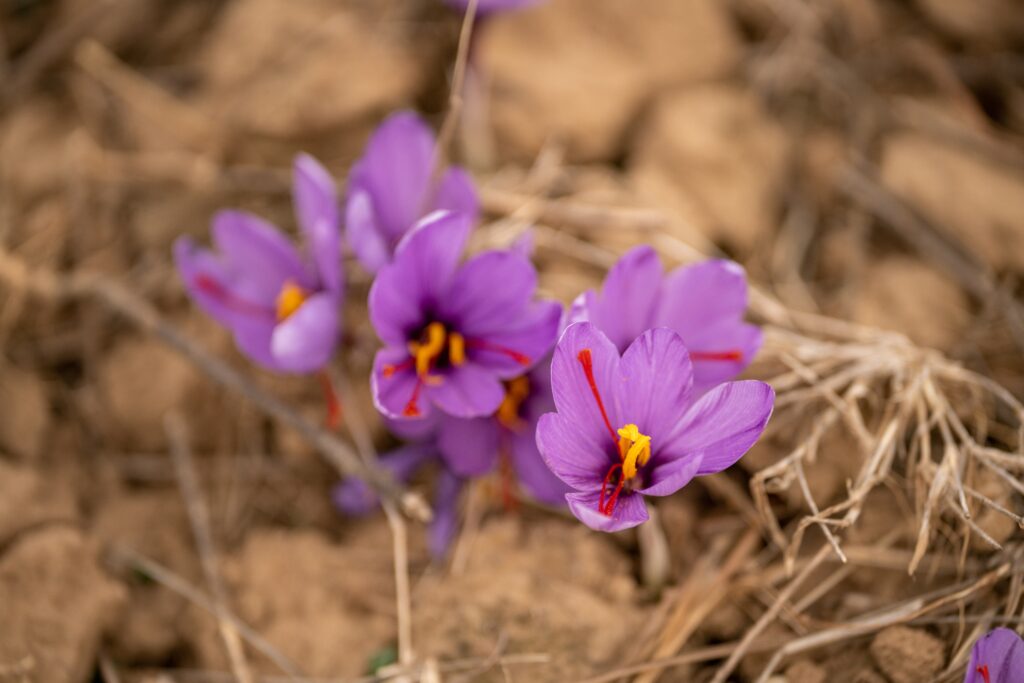
For centuries, saffron, also known as “the red gold,” has been cherished as a natural remedy and admired for its distinct aroma, flavor, and color that can enhance any dish. In traditional medicine, saffron has been used to treat various ailments.
Saffron’s benefits go beyond its unique flavor profile. It is abundant in antioxidants that protect the body from free radicals and promote overall health. Additionally, saffron has anti-inflammatory properties and may assist in improving mood and reducing depression symptoms.
Saffron is a versatile spice with endless uses in cooking. It is a staple ingredient in many Moroccan dishes, including tagines, couscous, and pastries, and it pairs well with seafood, chicken, lamb, and vegetables. People also use saffron to make tea and desserts, such as saffron ice cream and cakes.
In sweet and savory dishes, saffron is a luxurious ingredient that adds sophistication and depth to any meal. For centuries, saffron has been attributed with medicinal properties in addition to its culinary uses. The next time you savor a dish with saffron, appreciate its rich history and numerous benefits.
Tasting the Best of Taliouine: Exploring the Local Cuisine and Saffron-infused Dishes
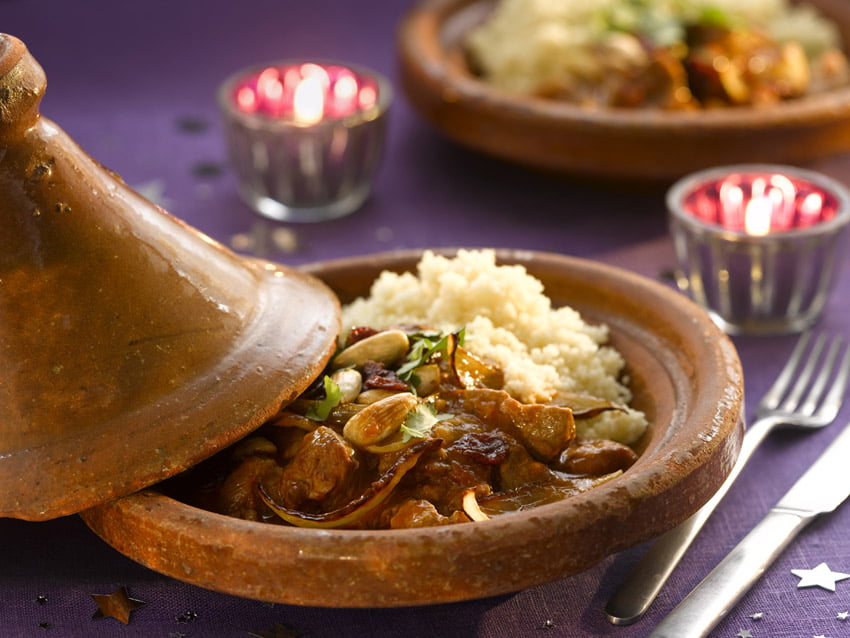
Taliouine is a small town in Morocco known for its unique blend of flavors, a hallmark of Moroccan cuisine. As the saffron capital of the country, Taliouine is famous for its delicious saffron-infused dishes that have been developed over generations.
Among the most popular dishes in Taliouine is the traditional Moroccan dish, tagine, a slow-cooked stew typically made with various meats or vegetables flavored with cumin, ginger, and saffron. The addition of saffron adds a unique flavor and aroma to the dish, making it a favorite among locals and tourists.
Another saffron-infused dish popular in Taliouine is R’fissa, a savory chicken and lentil dish with a generous amount of saffron. Msemmen, a Moroccan flatbread that is perfect for soaking up the rich sauce, often accompanies the dish.
Saffron is also added to the traditional Moroccan couscous served with vegetables, meats, and sauces. Using saffron during cooking gives the couscous a vibrant yellow color and a delicate flavor.
For those with a sweet tooth, Taliouine also offers a variety of saffron-infused desserts. One such dessert is Sellou, a traditional Moroccan sweet made with almonds, sesame seeds, and honey and flavored with saffron and cinnamon. The saffron adds a subtle floral note to the dessert, making it a perfect end to any meal.
Exploring the local cuisine of Taliouine is a must for anyone visiting the saffron capital of Morocco. With its wide variety of saffron-infused dishes, visitors are in for a culinary experience. From savory to sweet, every dish will have a touch of the unique and fragrant spice that makes Taliouine’s cuisine so exceptional.
The Annual Taliouine Saffron Festival: A Celebration of Culture and Tradition
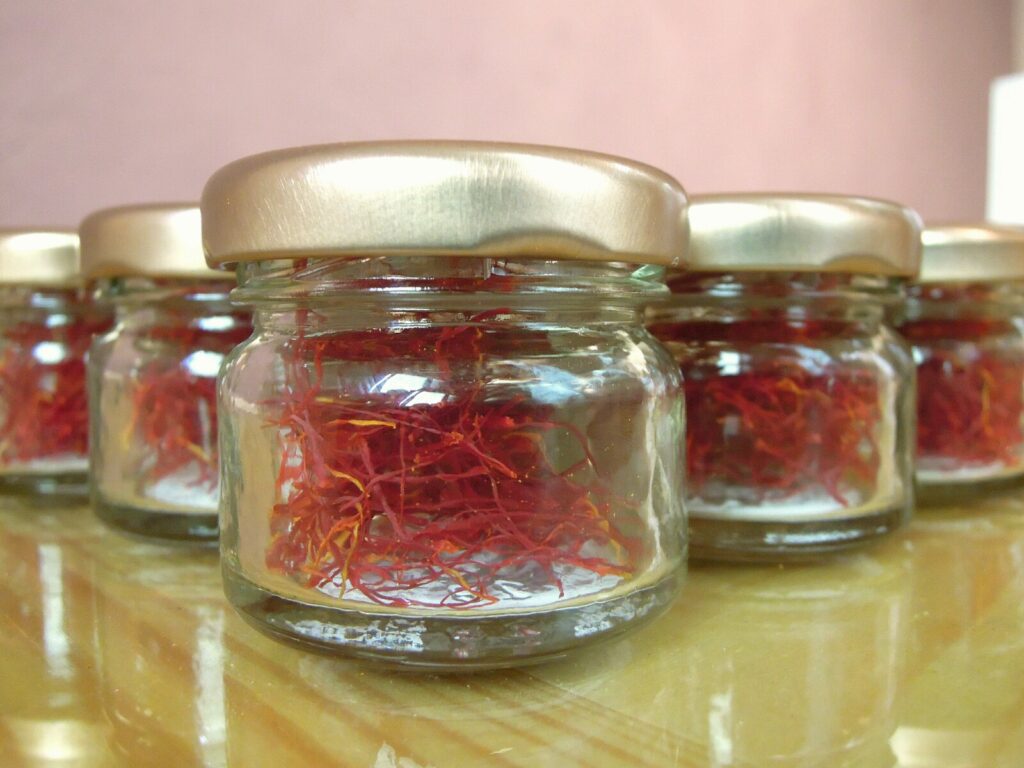
The Taliouine Saffron Festival takes place every November to celebrate the saffron harvest season and the delicate Crocus sativus flowers grown in the region. As one of Morocco’s most famous cultural celebrations, the festival features music, dance performances, and craft displays. One of its main attractions is the saffron cooking competition, which draws locals and tourists.
Visitors to the festival can learn about the cultural importance of saffron production and traditional harvesting techniques. Some even have the chance to participate in the process. The event also highlights the Berber community’s cultural heritage through traditional Moroccan music and dance performances.
The saffron cooking competition showcases the versatility of saffron in Moroccan cuisine as skilled chefs create innovative and delicious saffron-infused dishes. The festival’s vibrant atmosphere and mouth-watering food make it a unique and exciting event, allowing visitors to immerse themselves in the cultural and culinary traditions of the Taliouine region. For those visiting Taliouine, attending the Taliouine Saffron Festival is a must-see attraction.
Supporting the Community: How the Saffron Industry is Empowering Women and Boosting Local Economy in Taliouine
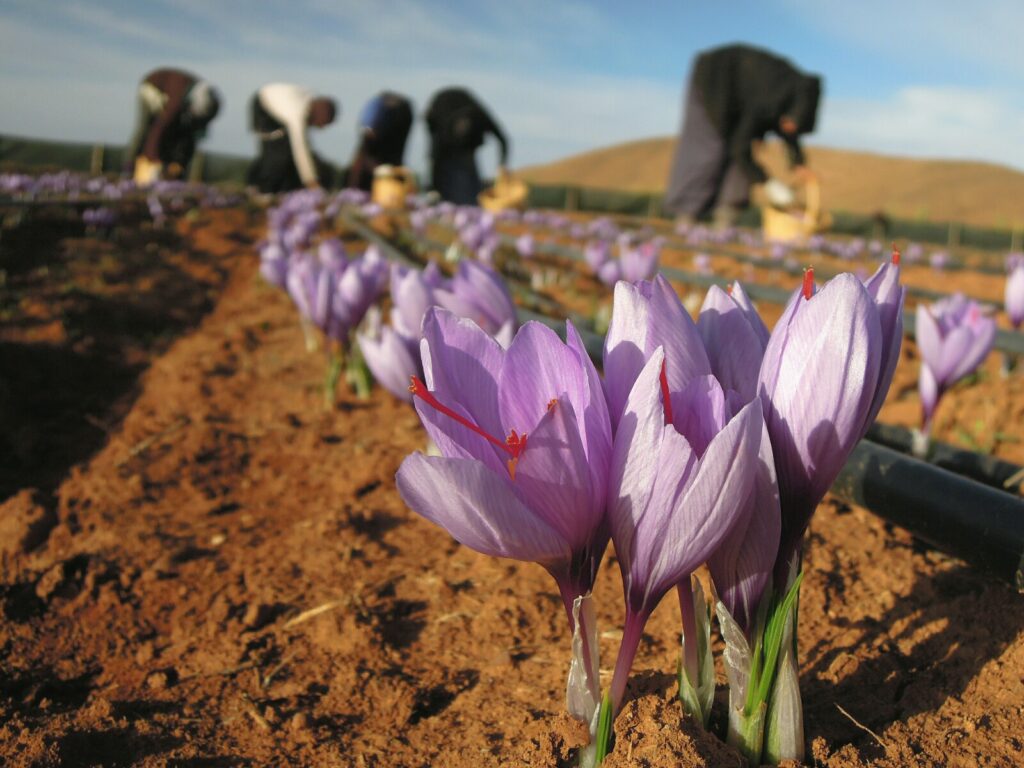
The saffron industry in Taliouine not only brings economic benefits to the region but also plays a significant role in empowering local women. Traditionally, society limited women in Taliouine to household chores and child-rearing. Still, with the saffron industry’s growth, they can now take on active roles in the workforce.
The production of saffron requires a great deal of manual labor, including planting, picking, and separating the delicate threads from the flowers. Women in Taliouine have become essential in this process. Their involvement has boosted the local economy and their self-worth and independence.
In addition to their roles in the production process, women in Taliouine have established cooperatives to sell and distribute saffron products collectively. These cooperatives offer community and support for women with limited social connections in their homes.
The saffron industry has brought a sense of pride and empowerment to women in Taliouine. Their involvement has positively impacted their families and the local economy. By supporting the saffron industry, tourists and consumers can contribute to the continued growth and empowerment of women in the region.
Taliouine: A Gateway to the High Atlas Mountains and Other Moroccan Treasures
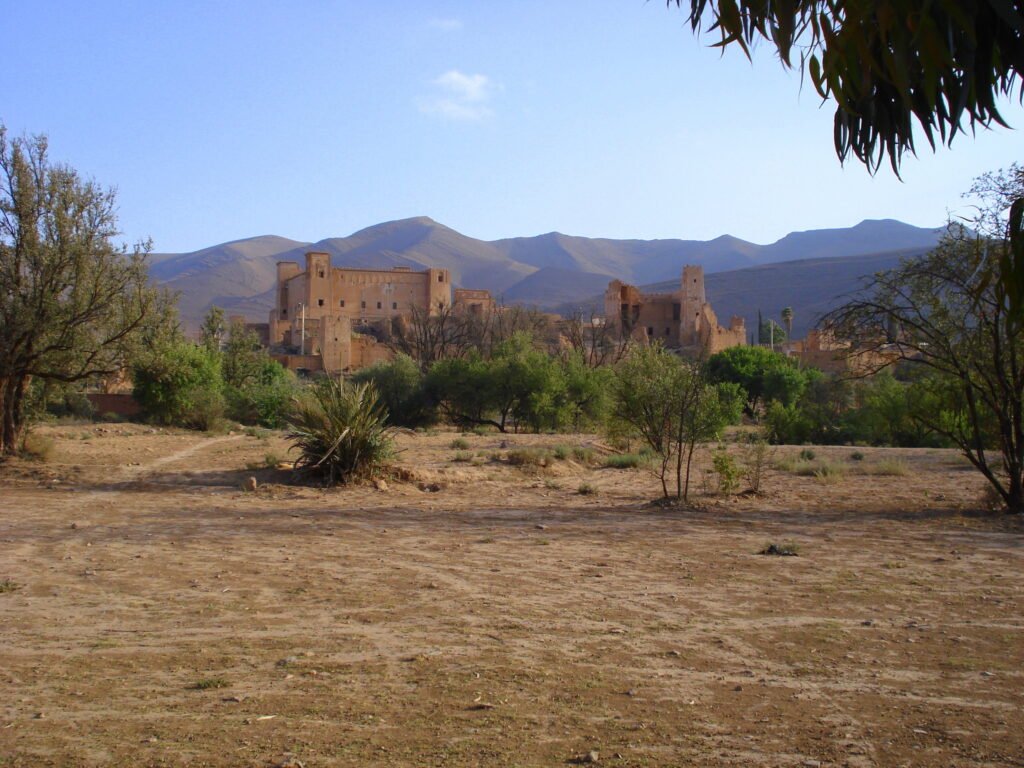
Taliouine is in southern Morocco’s foothills of the High Atlas Mountains, produces high-quality saffron, and is a gateway to nearby attractions. The town is located in the Taroudant province and can be easily reached by car from Ouarzazate, about 70 kilometers away.
Aside from the saffron fields, visitors can explore Taliouine’s historic kasbah and mosque, providing a glimpse into the region’s rich cultural heritage. For adventure-seekers, the High Atlas Mountains offer spectacular scenery, remote Berber villages, and challenging treks.
One of the most popular day trips from Taliouine is a visit to the UNESCO World Heritage Site, Aït Benhaddou. This ancient fortified city, built of earthen materials, showcases traditional Moroccan architecture and way of life. For nature enthusiasts, Toubkal National Park offers some of the country’s most spectacular hiking trails.
Taliouine hosts an annual saffron festival in October, where visitors can witness traditional Berber dances, music, and crafts. Visitors can participate in workshops by local women’s cooperatives to learn traditional Berber weaving and pottery-making while supporting the local community and gaining insight into the region’s cultural heritage.
Taliouine is a destination for saffron lovers and an ideal base to explore southern Morocco’s breathtaking beauty and cultural richness. Whether interested in history, culture, nature, or adventure, Taliouine has something for everyone.
Conclusion
If you’re looking for a unique and authentic Moroccan experience, Taliouine should be on your list. From the stunning saffron fields and farms to the delicious saffron-infused cuisine, this town offers a glimpse into Morocco’s rich culture and traditions. The saffron industry has not only put Taliouine on the map but also helped to support and empower the local community. Explore the golden town of Morocco’s saffron capital – it won’t disappoint.
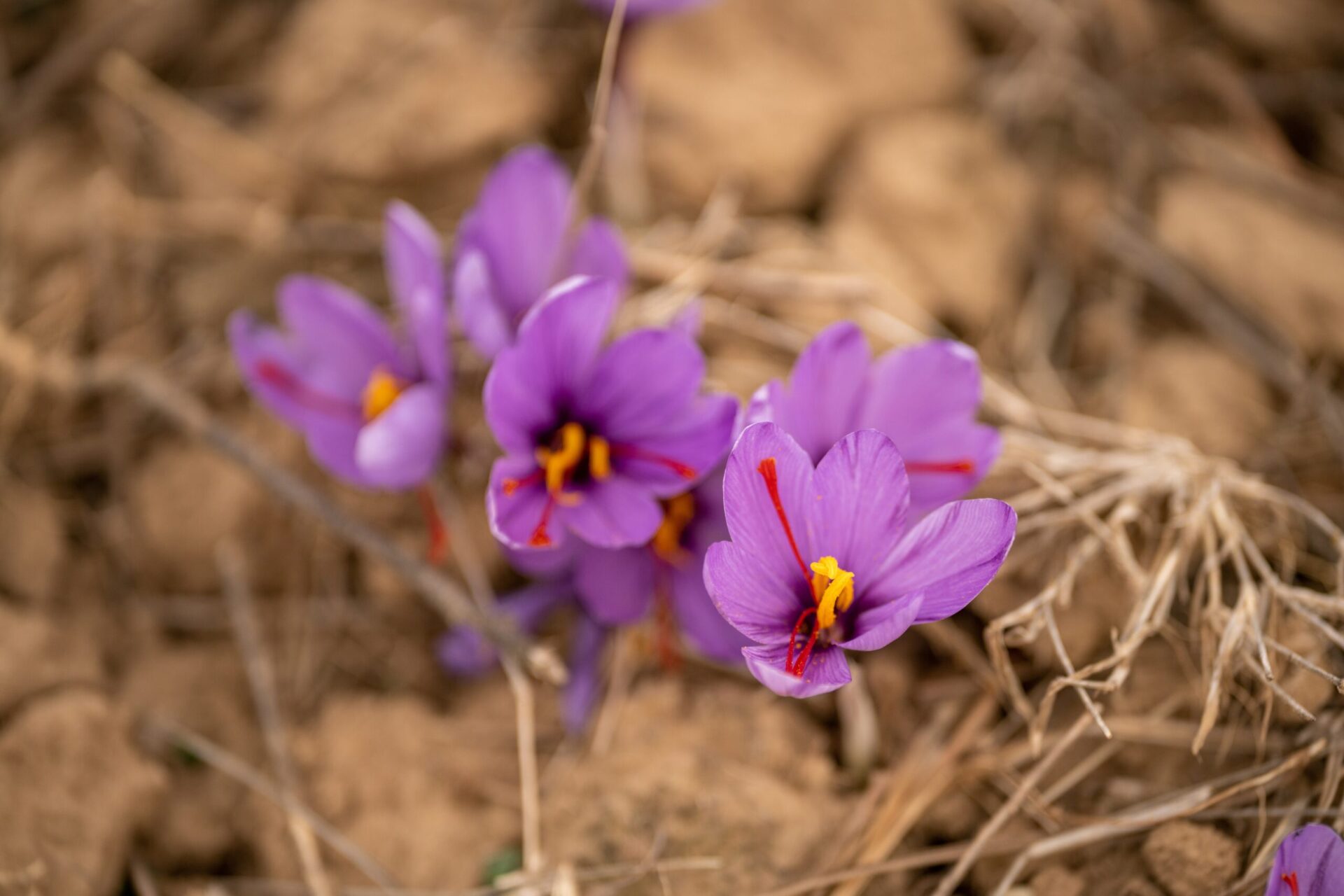
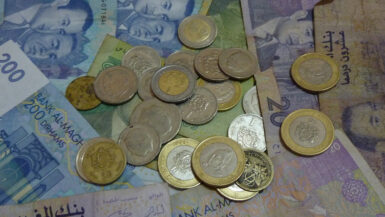
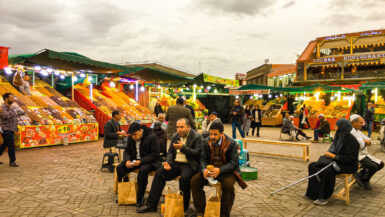

Leave a reply